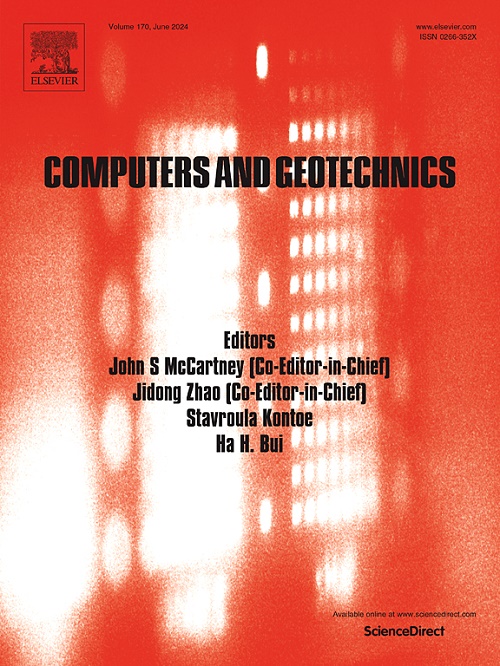Assessment on the thermal efficiency of deep borehole heat exchangers under rock and soil heterogeneity
IF 5.3
1区 工程技术
Q1 COMPUTER SCIENCE, INTERDISCIPLINARY APPLICATIONS
引用次数: 0
Abstract
To improve the prediction accuracy of heat gain in deep coaxial well heat exchanger (DCBHE), a fast calculation method based on the Proper Orthogonal Decomposition (POD) is proposed. This method analyzes the thermal conductivity distribution and temperature variations across different rock and soil layers. However, this algorithm only extracts the feature information from the original data, potentially introducing errors by not retaining all the data. To address this issue, a modification scheme is proposed. After modification, the relative error decreases from 3.5 % to 0.5 %, while the calculation speed increases by 3.7 %. The temperature distribution in layered rock and soil is then analyzed. It is found that the dimensionless temperature in layered conditions is higher than in uniform conditions, particularly near the heat source, with the maximum deviation ranging from 0.08596 to 0.56375. The modified POD method is 51.8 times faster than the Finite Difference Method (FDM) and provides higher accuracy, with a relative error of about 1.81 %. The study also examines the impact of rock and soil stratification on heat transfer. It finds that increased thermal conductivity inhomogeneity reduces heat transfer capacity, whereas a higher temperature gradient improves heat transfer efficiency, with a maximum increase of 15.25 %. While the inlet fluid temperature has a minimal effect on local heat removal capacity, it significantly enhances overall heat removal efficiency. Finally, by optimizing and predicting the fluid temperature at the borehole outlet, the optimal solution is achieved when the correlation coefficient (R2 ≥ 0.99). The predicted range of soil thermal conductivity is 3.26 to 3.38 W/(m·K). This rapid prediction method offers a valuable reference for engineering design and optimization of heat exchangers, enhancing their application efficiency.
求助全文
约1分钟内获得全文
求助全文
来源期刊

Computers and Geotechnics
地学-地球科学综合
CiteScore
9.10
自引率
15.10%
发文量
438
审稿时长
45 days
期刊介绍:
The use of computers is firmly established in geotechnical engineering and continues to grow rapidly in both engineering practice and academe. The development of advanced numerical techniques and constitutive modeling, in conjunction with rapid developments in computer hardware, enables problems to be tackled that were unthinkable even a few years ago. Computers and Geotechnics provides an up-to-date reference for engineers and researchers engaged in computer aided analysis and research in geotechnical engineering. The journal is intended for an expeditious dissemination of advanced computer applications across a broad range of geotechnical topics. Contributions on advances in numerical algorithms, computer implementation of new constitutive models and probabilistic methods are especially encouraged.
 求助内容:
求助内容: 应助结果提醒方式:
应助结果提醒方式:


